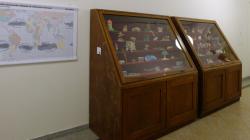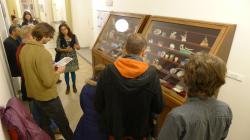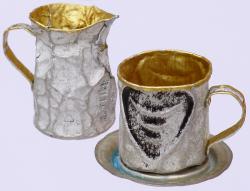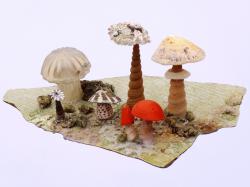How to do it step by step
1st Step:
Choosing the topic
At the start we had to decide on the topic. It was clear that we wanted to create an installation about waste. After some initial research, we asked Veronika Richterova to get involved, because she was making artefacts from plastic waste from the oceans and we were interested in her artwork. This step took about two weeks to complete.
2nd Step:
Negotiations with the artist
We contacted the artist and started negotiations with her. She told us that she had collected a lot of plastic waste and that she would make artefacts out of it. So we negotiated the necessary terms for cooperation and then started to prepare the exhibition. This step took us around three weeks to complete.
3rd Step:
Finding the place
The third step was to find a place for the installation. We identified the Municipal Museum in Usti nad Labem and made a plan to exhibit two installations – Newseum and Gifts of the Sea. Representatives from the museum and the local authorities agreed to cooperate with the Museo Mundial Project and to host these installations in the museum. The museum offered us a showcase that was just perfect for the artefacts. This stage took us about four weeks to complete.
4th Step:
Preparing the texts and maps
Veronica Richterova made the artefacts and we gathered information about plastic waste in the oceans. We commissioned some research and prepared the texts. Finally, once the texts were ready, Veronika Richterova made the posters to accompany the installation. This stage took us about four weeks to complete.
5th Step:
Implementation
Veronika Richterova installed the artefacts with their accompanying texts in the Municipal Museum of Usti nad Labem. The Gifts of the Sea installation was installed together with “The Newseum”, another Museo Mundial installation by the artist Tamara Moyzes (both installations are located in the same room at the Municipal Museum of Usti nad Labem). The vernissage took place on 10th December 2014. This step took about three days to complete.























